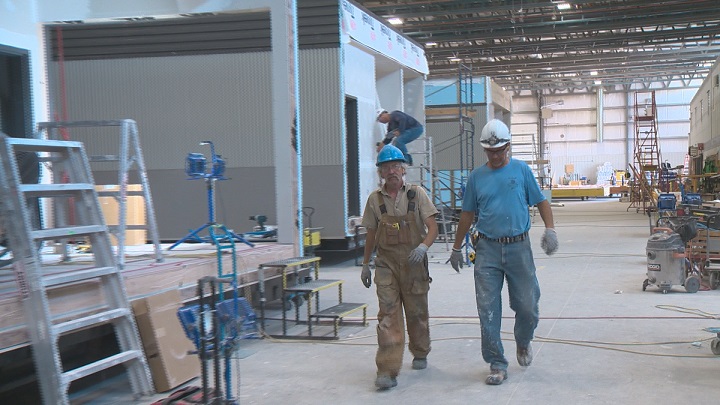The Canadian economy expanded by a solid 0.4 per cent in November, bouncing back after months of lacklustre growth and a flat reading in October, according to data released by Statistics Canada on Wednesday.

Growth was broad-based with 17 out of 20 sectors posting gains. Manufacturing led the charge, with a jump of 1.8 per cent, the largest monthly increase since February 2014. This was in part thanks to a rebound in vehicle assembly activity after shutdowns in September and October. The end of maintenance shutdowns also helped prop up the mining, oil and gas sector, which climbed 0.5 per cent. Service industries posted growth of 0.3 per cent, led by the real estate and wholesale and retail trade sectors.
SIGN UP FOR ERICA ALINI’S UPCOMING WEEKLY MONEY NEWSLETTER:
READ MORE: Canada’s unemployment rate falls to lowest rate in over 40 years: StatCan

Get weekly money news
While overall growth was in line with expectations, economists at Canada’s big banks appeared uncertain about the possible implications for future interest rate decisions by the Bank of Canada (BoC).
READ MORE: Staggering share of Canadians fear bankruptcy if interest rates rise much more
Central banks generally use interest rates, which affect the cost of borrowing money, as a way to keep inflation and economic growth steady. Higher rates, which make it more expensive to borrow, are broadly seen as a way to cool inflation and prevent the economy from overheating.
Amid solid growth and record job numbers, the BoC raised its trend-setting interest rate from 1 per cent to 1.25 per cent on Jan. 17, the third 0.25 percentage point increase since July of 2017. The pace of further increases, however, will depend on what new economic data shows, the bank has said.
READ MORE: Bank of Canada raises key interest rate to 1.25%
The bank’s next interest rate announcement is March 1, and it’s unclear whether the latest GDP report is good enough to warrant another hike.
WATCH: Vulnerability to economic ‘shocks’ has grown in Canada

Economists at BMO, RBC and CIBC noted that 0.4 per cent growth doesn’t seem enough to hit the BoC’s expectation of 2.5 per cent growth during the last three months of 2017. More likely, the economy will post an expansion of around 2 per cent for the period, they noted.
BMO and RBC refrained from drawing conclusions about the central bank’s next steps on interest rates. CIBC’s Nick Exarhos, on the other hand, believes the result suggests that “a pause through the winter and spring is still the most likely outcome for rates.”
At TD, economist Brian DePratto believes “July is the most likely timing for the next rate increase.”









Comments